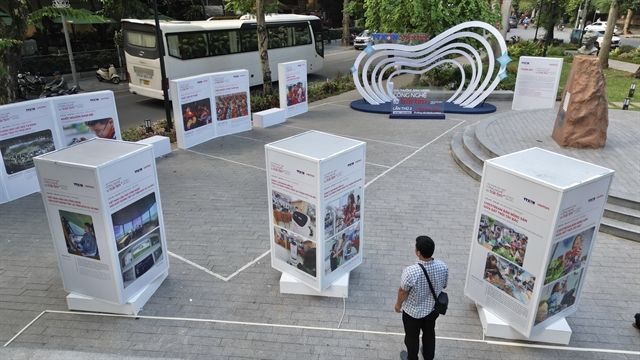 Features
Features

The unique architecture of stilt houses has been inextricably linked with Central Highland culture and tradition for thousands of years. Ethnic minorities in the region have built their houses with designs suitable to their customs and living habits.
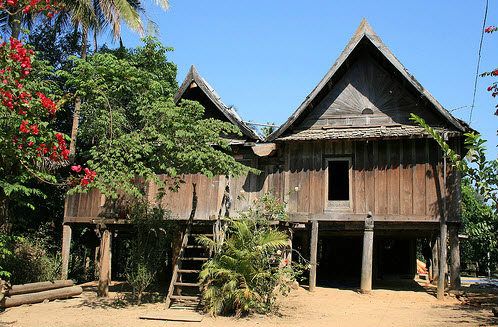
|
| The three-compartment stilt house consists of 8,726 planks of ca chit wood. Photo mytour.vn |
The unique architecture of stilt houses has been inextricably linked with Central Highland culture and tradition for thousands of years. Ethnic minorities in the region have built their houses with designs suitable to their customs and living habits.
But there is one stilt house that perhaps stands out more than the others, in Đôn Village, Krong Na Commune, Buôn Đôn District, Đắk Lắk Province.
The house reveals the secrets of a man they called "Elephant King", as well as the living environment of the Ê Đê, M'Nông and Lao people of more than a century ago.
The stilt house has a reputation throughout Southeast Asia as the original residence of the most skilful elephant hunter in the region, a man famed for his ability to tame the mammalian colossi.
It was Y Thu Knul (1828 -1938), the Đôn Village founder and elephant hunter, who publicly cleared and opened the land to build the village. Much respected, he was appointed by villagers as their leader and master soon after.
During his lifetime, Knul hunted and tamed nearly 500 wild elephants. His father was a migrant from Laos and married his mother, a M'Nông woman, so the house was built in the Lao style with a pagoda and tower, with features from local highland culture.
Building started in October 1883 and was completed in February 1885. The house was built entirely of wood and has three adjacent parallel compartments.
Village elders say that in 1861 Knul hunted a rare elephant with white hairs, skin and amber tusks. He offered this precious elephant to the King of Siam (now Thailand), who in response gave Knul much gold, silver and wealth, naming him "Khunjunob" -- the "Elephant Hunting King".
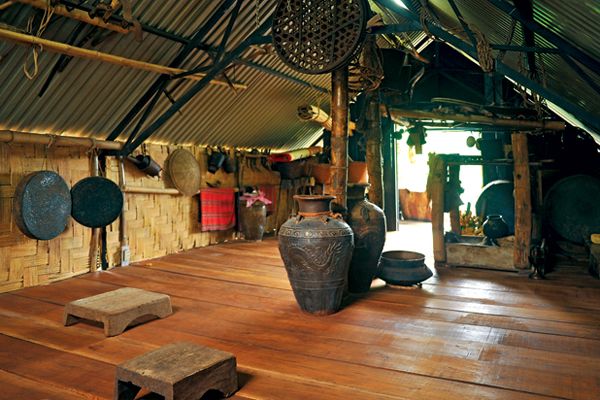
|
| Inside the famed old stilt house in Đôn Village. Photo mytour.vn |
The wooden house of the Elephant King was the biggest and most beautiful in Đôn Village. Its lower floor was used to shelter livestock and as a warehouse, while the upper floor was for living.
The middle compartment has a wooden staircase going up to the top. In front of the house is a large veranda spanning the two other compartments.
To build the house, the owner had to mobilise 18 elephants to pull timber wood, and 14 skilled workers led by a master craftsman named Khavivong Ao, a Lao woodcarving artisan.
The house was worth 12 elephants over 60 years old with long tusks, which were sold to pay for workers, designers, loggers and transporters.
As a custom, after finishing construction, Knul held a worshipping ceremony whereby 22 buffalos were slaughtered as an offering to the gods.
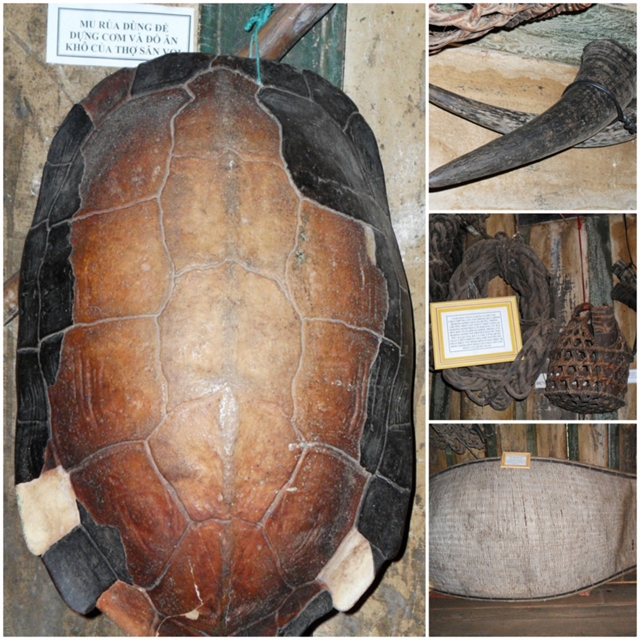
|
| Typical items of an elephant hunter and trainer are displayed at the stilt house of the Elephant King in Đôn Village. Photo vietfuntravel.com.vn |
The roofs are made of meticulously handcrafted wooden tiles, which are the most unique feature of the house. To make them, workers had to cut 8,726 wooden bars of an average size of 2x12x25 cm, equal to nearly 10 cubic metres of timber.
In 1954, a tamarind tree collapsed seriously damaging the inner compartment. Although it was restored, the house could no longer preserve its original wooden tile roof.
The house was made of the finest wood of Buôn Đôn forests such as sandalwood.
Through the ups and downs of history due to wars, time and weather, the house has been partly degraded but still retains its structure and the identity of the Central Highlands.
In 1929, it was disassembled and moved to its present-day place in Đô Village, 1km away from its former location, to avoid a fire.
It is important that the villagers keep memorabilia of the Elephant King for future generations. Currently, the two outer compartments are used as a shrine and a place to receive guests and display pictures and other memorabilia. The inner room is a place for family activities.
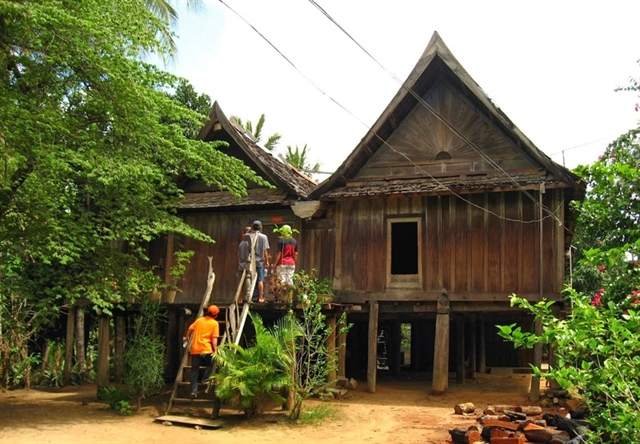
|
| The stilt house of the Elephant King in Đôn Village, Krong Na Commune, Buôn Đôn District, Đắk Lắk Province is a must-see landmark. Photo vietfuntravel.com.vn |
Stilt houses need preservation and restoration
The stilt house is a shelter for families and a space for spreading the culture of ethnic communities in the Central Highlands regions thus preserving and restoring the ancient architecture of stilt houses and contributing to preserving the traditional culture of the region.
Khăm Phết Lào, a resident in Buôn Ma Thuột City, said preserving the cultural beauty of the Ê Đê people had always been a concern of his, especially the restoration of the long stilt houses.
According to Lào, in the stilt house, xưn K’pan and K'pan chairs are usually placed in the direction of sunrise and sunset to reflect the spiritual life of the people living in them.
To restore a long stilt-house, the owner must pay attention to these two chairs, he said.
Meanwhile, H’Lưu Niê, a local in Ko Thong Village, Buôn Ma Thuột City, said she paid much attention to regularly restoring and upgrading her old stilt house for her children and grandchildren.
"I want to preserve it for our future generations and to teach them about the beauty of our cultural identity and community," said Niê.
She said it was very difficult to rebuild the houses today because it was hard to find the real original wood, but she still tried her best.
"I have been much encouraged by tourists and supported by the local authorities. Many visitors who come to my house have also recommended keeping the traditional style for the community and the nation as a whole" she said. VNS




